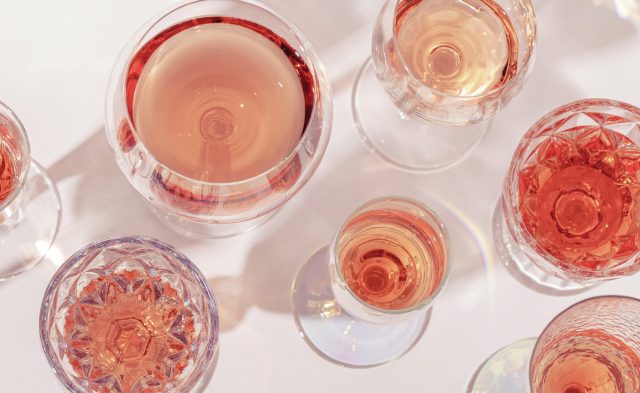This website uses cookies so that we can provide you with the best user experience possible. Cookie information is stored in your browser and performs functions such as recognising you when you return to our website and helping our team to understand which sections of the website you find most interesting and useful.
Bordeaux and Provence hit back on ‘swimming pool rosé’ reports
National newspapers have claimed there is a “battle” between two French regions about “swimming pool rosé” but is it all a storm in a teacup (or wine glass)? db spoke to representatives from both regions to find out.

According to newspaper reports this week, including articles in The Times and The Guardian, there is a debate between Bordeaux and Provence about the standard and style of rosé wine.
Citing a so-called “rosé aristocracy”, The Times’ leading wine and food critics claimed discord, claiming “purists” in Provence are “attacking” Bordeaux for turning to making lighter rosé, following a drop in traditional red wine sales by 36% in the past decade in the latter region.
Claiming there is a “fad” for pale pink wines, and a so-called “swimming pool plonk” rosé, often associated with celebrity endorsements, The Times argued that Provence and Bordeaux have now become battlegrounds over the style and quality of the wine.
Democratise
But representatives from the regions have quashed the debate, with a representative for Provence, saying there is “no need” to pit so-called pool rosés against terroir rosés.
It pushed back on the idea of the region being an “elite”, and instead said it was helping to democratise the category.
Brice Eymard, MD of the CIVP (Conseil Interprofessional des Vins de Provence) said it had been making rosé wines for decades, and admitted its “unique heritage and unparalleled expertise” were deep-rooted in “everything our region does” and enabled it “to create a style of rosé that has become a benchmark”.
But he also said that “Provence rosé is perfect for casual moments such drinks with friends by the pool or alongside simple meals” and also “our gastronomic wines, which have spent time in wooden barrels, stand up perfectly alongside more complex dishes and formal occasions”.
He crucially added: “There’s no need to pit pool rosés against terroir rosés.
“Provence’s winegrowers have the know-how to produce a wide variety of rosés that will appeal to wine lovers and younger consumers alike. We’re proud to be playing our part in helping to democratise wine, rather than sticking to an elitist approach.”
He did concede also that “certain technical elements” could be emulated in other regions, but the history and “specificity of the terroirs cannot”, which made Vins de Provence rosé wines “unique and inimitable”.
Diversity
Caroline Vigneron, marketing manager at the CIVB (Conseil Interprofessionel du Vin de Bordeaux) told db that making rosé in Bordeaux wasn’t a new phenomenon, but was also keen to point out the category was about diversity.
She said that Bordeaux’s rosé wines now represent a “considerable portion” of all the wine produced in Bordeaux: 12.8 million bottles last year.
“Our rosé wines are light, lively, fruity and elegant, offering characteristics that are unique to our region,” she said.
“Making rosé in Bordeaux isn’t new – in fact, we have been making it here since the 18th century,” she continued, “but a new generation of winemakers with new ideas, energy and enthusiasm, have developed it considerably over the last 10 years and our wines are increasingly being recognised on the international stage for their quality.”
Vigneron was also keen to stress that another Bordeaux-specific wine was making a comeback, which contradicts the idea that they were producing just light pink wines; the dark-pink Clairet.
She also highlighted the diversity of rosé, as opposed to those seeking to make an argument there is a conflict about style.
“Clairet, a regional gem once considered to be the precursor of Bordeaux wine, is making a comeback too. Intense pink in colour, with light tannins and the freshness of a rosé, it’s made to be enjoyed chilled; it’s a great example of how diverse the rosé category has become.”
Lightness of being
Interestingly, db editor-in-chief Patrick Schmitt MW and fellow judges noted last year at the Global Rosé Masters that there wasn’t a direct relationship between colour and flavour, as the articles appear to suggest.
The judges discovered that it was notable that some of the rosé wines had almost no fruit flavours at all, especially among the higher price bands.
Discussing a set of “pretty bony and etiolated liquids” in the £30-£50 category, one of the judges, Jonathan Pedley MW, said: “It is curious to reflect on just how much the consumer is prepared to pay for austerity.”
Schmitt added: “In other words, some of the priciest rosés were the lightest, and it seems as though in certain cases, the more you pay, the less you get – both in terms of colour and flavour.”
Related news
5 ways to deep-clean your decanter after Christmas
Navigating change: how Bibendum plans to tackle new wine duty system

